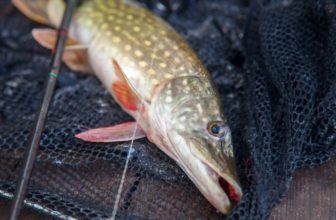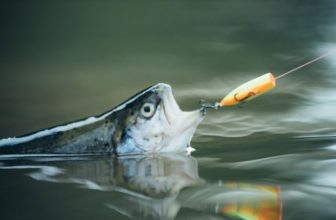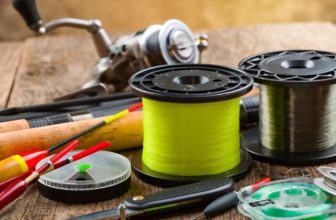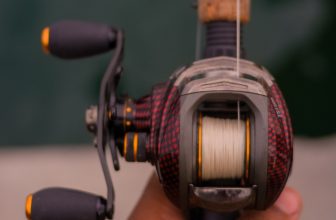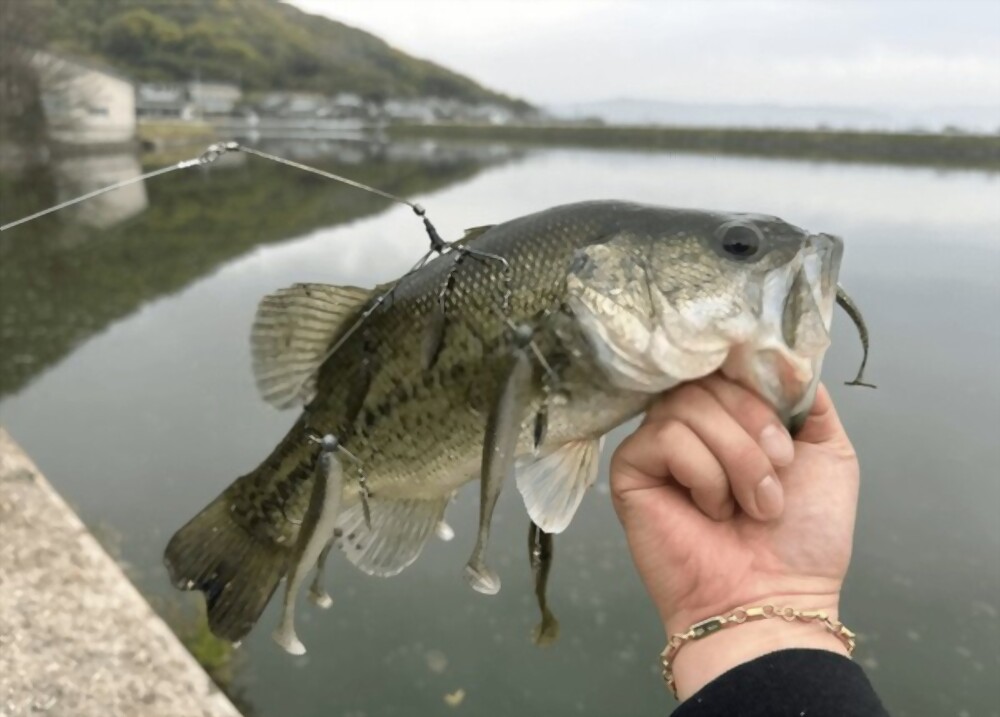
Fishing Line For Bass
When you’re out on the water trying to catch bass, having the right fishing line can make all the difference. With so many options available, it can be overwhelming to decide which one to choose. But fear not, we’re here to help you navigate the different types of fishing line for bass and figure out which one is best for your needs.
Before we dive into the different types of fishing line, it’s important to understand why having the right one is crucial. The type of line you use can affect your casting distance, sensitivity, and even the size of the fish you’re able to catch. By choosing the right fishing line, you can improve your chances of success on the water and have a more enjoyable fishing experience.
So, let’s get started and explore the pros and cons of the three main types of fishing line for bass: monofilament, braided, and fluorocarbon.
Types of Fishing Line for Bass
Let’s dive into the different types of fishing line you can use to reel in that big bass! There are three main types of fishing line that are commonly used for bass fishing: monofilament, fluorocarbon, and braided line. Each type has its own strengths and weaknesses, so it’s important to choose the right one for your specific fishing situation.
Monofilament is a popular choice for beginners because it’s easy to handle and knot. It also has some stretch, which can help absorb the shock of a fish striking your bait. However, monofilament can be visible in the water and it can deteriorate over time from exposure to sunlight and water.
Fluorocarbon is a great choice for clear water because it’s nearly invisible underwater. It’s also more abrasion-resistant than monofilament and doesn’t degrade as quickly. However, fluorocarbon is stiffer than monofilament and can be more difficult to handle and knot.
Braided line is the strongest of the three and is great for fishing in heavy cover where you need to pull a fish out quickly. It has no stretch, which means you can feel even the slightest nibble on your bait. However, braided line can be visible in clear water and it’s not as forgiving as monofilament or fluorocarbon, so if a fish strikes hard, it can potentially break your line.
Remember to choose the right fishing line based on your specific fishing situation and you’ll increase your chances of catching that big bass you’ve been dreaming about. Happy fishing!
Monofilament Fishing Line: Pros and Cons
You may already know the advantages and drawbacks of using monofilament for your angling needs. Monofilament is a popular choice for bass fishing because it is affordable and easy to handle. It also floats on the water surface, making it ideal for topwater lures and surface baits.
However, one downside of using monofilament is that it stretches easily, making it less sensitive to bites and strikes, especially when fishing in deep waters. Another benefit of monofilament is that it has a good knot strength, allowing you to tie stronger knots than other types of fishing lines.
This type of fishing line also has a high shock absorption, making it perfect for fishing in areas with heavy cover or structures. When you hook a fish, the monofilament line can stretch and absorb the shock, preventing the line from breaking or getting damaged.
Overall, monofilament fishing line has its pros and cons. It may not be the best option for all fishing situations, but it’s definitely a go-to choice for many anglers, especially those who are just starting out. With proper use and maintenance, monofilament fishing line can help you catch more bass and enjoy your time on the water.
Braided Fishing Line: Pros and Cons
Braided line is a popular choice among experienced anglers due to its superior sensitivity and strength. Unlike monofilament line, braided line is made up of several strands woven tightly together, making it extremely strong and resistant to abrasion. Additionally, braided line has no stretch, allowing anglers to feel even the slightest nibble on their bait.
Another advantage of braided line is its ability to cast farther and more accurately than monofilament line. Because it is thinner in diameter, braided line creates less drag in the water, allowing it to fly through the air with ease. This makes it easier to cast into tight spaces or reach fish in deeper waters. Additionally, braided line is highly visible above water, making it easier to track the movement of your bait.
Despite its many benefits, braided line does have some drawbacks. Because it has no stretch, it can be more difficult to detect when a fish is biting. Additionally, its high visibility can make it more likely to spook wary fish. Finally, braided line can be more expensive than monofilament line, which can be a deterrent for some anglers.
Overall, braided line is a great choice for experienced anglers looking for strength, sensitivity, and casting distance, but may not be the best choice for beginners or those targeting particularly skittish fish.
Fluorocarbon Fishing Line: Pros and Cons
If you want to step up your game and catch more elusive fish, consider using fluorocarbon line – it’s a game-changer! While it may be more expensive than other types of fishing line, it has several advantages that make it worth the investment.
For one, it’s virtually invisible underwater, which can make all the difference when fishing for wary bass. Another advantage is its sensitivity. Fluorocarbon is denser than other types of fishing line, allowing anglers to feel even the slightest bites and nibbles.
This is especially important when fishing for bass, as they are known to be subtle feeders and may not fully commit to a bait or lure right away. With fluorocarbon line, you’ll be able to detect those subtle bites and reel in more fish.
While there are certainly some drawbacks to using fluorocarbon fishing line – such as its tendency to be stiffer and less forgiving than other types of line – the benefits far outweigh the negatives.
Whether you’re a seasoned angler or just starting out, using fluorocarbon line can make a huge difference in your success rate when fishing for bass. Give it a try and see for yourself!
Choosing the Best Fishing Line for Your Bass Fishing Needs
When gearing up for your next bass fishing trip, it’s important to consider which type of line will best suit your needs.
There are a few factors to keep in mind when choosing the best fishing line for bass.
First, consider the water conditions you’ll be fishing in. If the water is clear, a fluorocarbon line may be your best bet as it is virtually invisible underwater. On the other hand, if you’ll be fishing in murky water, a braided line may be a better option as it is more visible and can help you feel bites better.
Another factor to keep in mind is the type of bait you’ll be using. If you’ll be using a lighter bait, such as a plastic worm, a lighter line may be necessary to ensure the bait moves naturally in the water. However, if you’ll be using a heavier bait, such as a crankbait, a heavier line may be necessary to provide enough strength to cast and retrieve the bait effectively.
Ultimately, the best fishing line for your bass fishing needs will depend on a variety of factors. It’s important to experiment with different types of line and see what works best for you in different conditions.
Don’t be afraid to ask fellow anglers for recommendations and tips, as they may have valuable insight based on their own experiences.
With a little bit of experimentation and research, you’ll be able to find the perfect fishing line for your next bass fishing trip.
Frequently Asked Questions
How do I tie different types of fishing knots for bass fishing?
To tie different types of knots for bass fishing, first determine the type of line you are using. Then, research and practice tying popular knots such as the Palomar, improved clinch, and uni knot.
What are the best hooks to use for bass fishing?
When bass fishing, the best hooks to use depend on the bait you’re using and the conditions of the water. For soft plastics, a worm hook works well, while a treble hook is good for crankbaits.
What is the best time of day to fish for bass?
The best time of day to fish for bass is typically early mornings or late evenings when the water is cooler. However, they can also be caught throughout the day in shaded areas or near structure.
What are some common mistakes that beginners make when using fishing line for bass?
When beginners use fishing line for bass, they often make mistakes such as using the wrong line weight, not tying strong knots, and not replacing old or damaged line. These errors can lead to lost fish and frustration.
How do I properly store and maintain my fishing line to ensure its longevity?
To ensure your fishing line lasts, store it in a cool, dry place away from sunlight. Avoid overfilling your reel, and regularly inspect for damage or wear. Replace any damaged sections promptly.
Conclusion
So, you’ve learned about the different types of fishing line for bass and their pros and cons. Now, how do you choose the best one for your needs?
It really depends on your personal preferences and the fishing conditions. If you want a versatile line that can handle a variety of situations, monofilament line might be your best bet.
If you’re looking for strength and sensitivity, braided line could be the way to go. And if you want a line that’s virtually invisible in the water, fluorocarbon line might be the right choice.
Ultimately, the best way to determine which line to use is to experiment and see what works best for you. Happy fishing!



